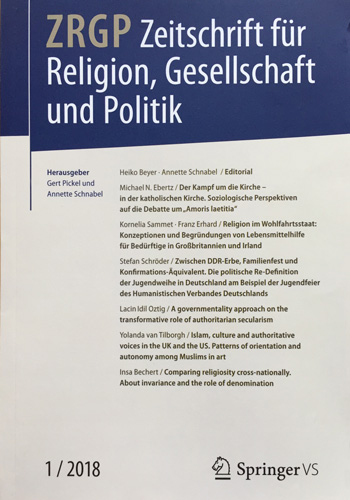
Islam, culture, and authoritative voices in the UK and the US
Patterns of orientation and autonomy among Muslims in art
Reversed Autonomization British and North American Muslim performing artists have the opportunity to translate Islamic knowledge in relation to art in various ways and in circumstances in which religion may be no longer obviously anchored in culture. At the same time, a reversed autonomization in the field of Muslim artists seems at stake. From the 1990s onward, public discussion among Muslims focusing on contested expressions of (popular) art by Muslims has grown. At the debate Music—Singing or Sinning? in London, for instance, the dispute over the justification of controlling cultural habits versus loosening cultural restrictions became extremely heated. The art and Islam discourse is reinforced by the popularity of the tenet that tends to severely restrict forms of art and music: Salafi Islam. This phenomenon makes it crucial to put the assumed independency of the field of Muslim performing artists in the West into perspective.
Social and Artistic Autonomy If, according to Bourdieu, the main drive of the agents in the field is to improve social positions, how can the level of autonomy of the field of Muslim performing artists in the UK and the US be understood? Taking the Bourdieusian concepts of field, habitus, and capital into account, the present article intends to investigate in which ways the fields of art and religion intersect as well as how orientations to art, culture, and Islam are distributed among Muslim artists in the Muslim-minority contexts of the West. The chapter explores the kind of authoritative voices and interactions with the field of Islam (teachers and preachers) as much as the significance of relative autonomy in the field of Muslim artists in hip-hop, stand-up comedy, poetry, theater, and contemporary art. These topics are considered from the structural analysis of in-depth interviews, secondary sources, and cultural events in the UK and the US. The findings display that disparate ideological orientations are influenced by views to restrict or, in contrast, to reinforce the significance of art and culture. They imply distinct struggles for social and artistic autonomy. Ranging from strict to secular perspectives, the encountered cultural views are assessed by their relatively weak and strong ties with the field of religion and the field of art. Reflecting gender, race, and ethnic background as categories of difference, the scheme of cultural orientations might be transferable to other settings in which culture, religion, and ideology are involved.
Van Tilborgh, Y. “Islam, culture and authoritative voices in the UK and the US: Patterns of orientation and autonomy among Muslims in art”, Zeitschrift für Religion, Gesellschaft und Politik 2/1 (2018) 101–34.
Free download: link.springer.com/article/10.1007%2Fs41682-018-0017-y
